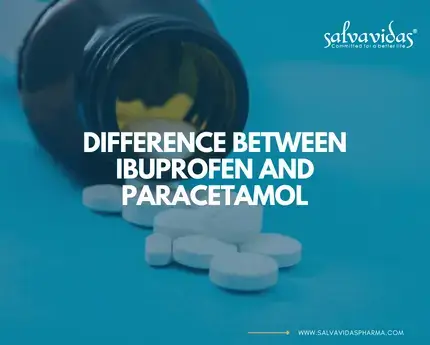
Amoxicillin tablet is one of the most popular and commonly utilized beta-lactam antibiotics approved by the U.S. Food and Drug Administration (FDA). Moreover, became available in the market in 1972. History of Amoxicillin: The term is anti-biotic originally means “against life”. Later it was coined for drugs inhibiting bacterial growth and curing bacterial infections. In 1928 penicillin was discovered by Scottish bacteriologist Alexander Fleming (1881–1955). In the early 1940s for the very first time antibiotics were used for the treatment of infection in humans. Over time by developing advanced chemical structures researchers found a way to semisynthetic version of penicillin. The newly developed antibiotics were effective against a wide range of bacteria. In 1962 researchers at the Beecham pharmaceutical laboratories in developed an Amoxicillin tablet dosage and marketed it about a decade later. Currently, Amoxicillin is available by prescription. Mode of action and use of Amoxicillin: Amoxicillin and clavulanate potassium tablets Antibiotics work by killing or stopping the enormous growth of bacteria. It blocks the formation of the bacterial cell wall by inhibiting the formation of enzyme-producing peptidoglycan, which is an essential component of cell wall. It results into the disintegration of bacterial cell and eventually bacterial growth is inhibited. It mainly use for the treatment of bacterial infections. Specifically for gram-positive bacterial infections. Widely used for the treatment of streptococcal bacteria, pneumococci, Gonococci, Meningococcal, etc. causing respiratory tract infections, urinary tract infections, and skin infections. As well as Bordetella pertussis, the bacterium causing whooping cough, Salmonella typhi, cause’s the typhoid, and cholera causing bacteria Vibrio cholera. Amoxicillin dose sometimes used as an antibiotic for animals. Pharmacology: Amoxicillin 250mg is an amino penicillin derived from penicillin by adding an extra amino group. It is a crystalline off white color substance and is generally available in a trihybrid form for therapeutic purposes. Its molecular formula is C16H19N3O5S·3H2O. Amoxicillin 500 mg Dosage is available for oral use in the form of capsules, regular, chewable, and dispersible tablets, syrup, and pediatric suspension for oral use. An extended-release form is also available. The intravenous form of amoxicillin 500 mg is not sold in some countries. Amoxicillin 500mg shows better absorption when taken by mouth. Amoxicillin 250mg tablet diffuses easily into tissues and body fluids. It is metabolized by the liver and excreted into the urine. Results yielding higher concentrations in blood and in urine with average high concentration blood levels typically reached within 1 to 2 hours. For adults, the recommended dosage of amoxicillin is 650mg to 1750 mg/d, & for pediatric patients (3 months and older) 20 to 45 mg/kg/d, the dosage is recommended. The Dosage is divided into doses and administered after every 8 to 12 hours. Based on the physical conditions of the patient,, the dose may vary. Safety and efficacy: Amoxicillin 500 mg has been tested for its safety and efficacy in clinical trials both animal and human experiments. It has been clinically proven safe for consumption even for pregnant women. In addition, it poses no risk to the majority group of people. Amoxicillin’s effectiveness and safety profile resulted in its extensive use in the treatment of bacterial infections worldwide. Its accessibility and affordability ensure it remains a crucial tool in combating diseases, particularly in resource-limited regions. Amoxicillin tablet Market and our role: We all know that Amoxicillin tablet 500mg is a cutting-edge antibiotic for the treatment of a wide range of bacterial infections across all medical settings like hospitals, clinics, and veterinary medicines. Amoxicillin tablet dosage comes within the penicillin family, which has significant growth and is expected to reach 5.2 billion USD by 2024. By 2033, the expected growth in the market is around 5.8 billion USD as per research done by market experts. With the increasing demand for antibiotics and advanced therapeutics, Amoxicillin and clavulanate potassium show steady growth in the market. Innovative delivery systems and combinational therapy with other potential drugs show highly probable opportunities for market expansion. The global pharmaceutical market is highly competitive, with numerous players disputing for market share due to the increasing demand for pharmaceutical products in the global market day by day. Salvavidas Pharmaceutical Pvt. Ltd. has made significant contributions to the pharmaceutical industry through dedication to producing high-quality pharmaceutical products. Salvavidas Pharmaceutical is a leading name in the pharmaceutical industry & differentiates itself through its commitment to quality and innovation. With a strong focus on research and development, the company has established itself. The company’s primary focus is on maintaining implacable quality standards and expanding its global reach has positioned it as a trusted exporter of pharmaceutical products Benefits of Choosing Salvavidas Pharmaceutical The company adheres to strict quality control measures and complies with international standards to ensure safe and effective product development. The production of Amoxicillin 500mg involves several stages, including fermentation, purification, and formulation. Each step is carefully monitored and documented to ensure the highest quality of the final product. The company adheres to various international regulatory bodies, including the FDA, WHO, and EMA. Compliance with these standards ensures that Salvavidas Pharmaceutical’s products are safe and effective. Quality is not just a commitment to us rather it is our responsibility to ensure the safety and effectiveness of the medication that we offer. We strive to make a positive global impact by providing accessible and affordable products to improve healthcare outcomes worldwide. We conduct business with transparency, integrity, and social responsibility earning trust and respect from all stakeholders. The company’s strategic approach to market expansion ensures a broad and diverse customer base. Salvavidas Pharmaceutical exports Amoxicillin and clavulanate potassium to numerous countries across Asia, Africa, Europe, and the Americas. We place customers need at the forefront of our operations. We aim to exceed customer expectations ensuring mutual success.

Introduction When it comes to managing pain and reducing fever, two commonly used over-the-counter medications are ibuprofen and paracetamol. Both medications are widely available and offer effective relief for various conditions. However, there are some key differences between the two that are important to understand. In this article, we will delve into the difference between ibuprofen and paracetamol, exploring their mechanisms of action, uses, side effects, and more. Let’s dive in! Difference Between Ibuprofen and Paracetamol Ibuprofen and paracetamol are both analgesics and antipyretics, meaning they help relieve pain and reduce fever. However, they belong to different classes of medications and work in different ways within the body. Ibuprofen Ibuprofen is a nonsteroidal anti-inflammatory drug (NSAID) that works by inhibiting the production of certain chemicals in the body called prostaglandins. These prostaglandins play a role in the inflammation process, contributing to pain and fever. By blocking their production, ibuprofen helps reduce inflammation, relieve pain, and lower fever. Uses of Ibuprofen Pain relief: Ibuprofen is commonly used to relieve mild to moderate pain, such as headaches, dental pain, menstrual cramps, and musculoskeletal pain. Inflammation reduction: Due to its anti-inflammatory properties, ibuprofen is also used to reduce swelling and inflammation associated with conditions like arthritis and sports injuries. Fever reduction: Ibuprofen can effectively lower fever in individuals of all ages. Paracetamol Paracetamol, also known as acetaminophen, is classified as an analgesic and antipyretic but lacks significant anti-inflammatory properties. It works by inhibiting the production of prostaglandins in the brain that are responsible for pain and fever. Although the exact mechanism is not fully understood, paracetamol is believed to work primarily within the central nervous system. Uses of Paracetamol Pain relief: Paracetamol is commonly used to relieve mild to moderate pain, including headaches, toothaches, and muscle aches. It is also effective in managing pain associated with conditions like osteoarthritis. Fever reduction: Paracetamol is widely used to lower fever in adults and children. Key Differences Mechanism of action: Ibuprofen works by inhibiting the production of prostaglandins in the body, while paracetamol primarily works within the central nervous system to block pain and fever signals. Anti-inflammatory properties: Ibuprofen has significant anti-inflammatory effects, making it effective for reducing inflammation associated with conditions like arthritis. Paracetamol, on the other hand, lacks significant anti-inflammatory properties. Side effects: Ibuprofen can irritate the stomach lining and may cause gastrointestinal side effects such as indigestion and stomach ulcers. Paracetamol is generally well-tolerated but can cause liver damage if taken in excessive amounts or combined with alcohol. Suitable for different age groups: Ibuprofen is generally safe for children aged three months and above, while paracetamol is commonly used for children of all ages, including infants. Availability: Ibuprofen is available in various forms, including tablets, capsules, and topical gels, while paracetamol is available in tablets, capsules, syrups, and even suppositories for rectal administration. Both medications can be easily obtained over the counter without a prescription. Interactions with other medications: Ibuprofen may interact with certain medications, such as blood thinners and selective serotonin reuptake inhibitors (SSRIs), increasing the risk of bleeding or stomach ulcers. Paracetamol has fewer interactions with other medications, making it a safer choice for individuals taking multiple medications. Duration of action: Ibuprofen has a longer duration of action compared to paracetamol. While paracetamol may provide relief for up to 4-6 hours, ibuprofen’s effects can last for 6-8 hours. Allergic reactions: Some individuals may be allergic to ibuprofen or paracetamol. It is essential to be aware of any signs of an allergic reaction, such as rash, swelling, or difficulty breathing, and seek medical attention if necessary. Dosage and frequency: The recommended dosage and frequency of Ibuprofen and Paracetamol Suspension may vary depending on the age, weight, and condition being treated. It is crucial to follow the instructions provided by healthcare professionals or read the package insert carefully. Overdose risk: Taking excessive amounts of either ibuprofen or paracetamol can be harmful and lead to serious complications. It is vital to adhere to the recommended dosages and avoid combining these medications without medical advice. Frequently Asked Questions (FAQs) Q. Can I take ibuprofen and paracetamol together? A. Yes, in certain situations, it may be appropriate to take ibuprofen and paracetamol together for more potent pain relief. However, it is essential to consult a healthcare professional or pharmacist for appropriate dosing instructions. Q. Which is safer, ibuprofen, or paracetamol? A. Both ibuprofen and paracetamol are generally safe when used as directed. However, it is important to consider individual factors, such as medical history, current medications, and any underlying conditions, before choosing one over the other. Consulting a healthcare professional can help determine the safest option for you. Q. Can ibuprofen and paracetamol be given to children? A. Yes, both ibuprofen and paracetamol can be given to children, but the dosages and formulations may differ based on the child’s age and weight. It is crucial to follow the instructions provided by healthcare professionals and use appropriate pediatric formulations. Q. Are there any natural alternatives to ibuprofen and paracetamol? A. Yes, some natural alternatives to ibuprofen and paracetamol include herbal remedies like turmeric, ginger, and willow bark. However, it is essential to consult a healthcare professional before using these alternatives, as they may still have side effects and interactions with other medications. Q. Can I use ibuprofen or paracetamol during pregnancy? A. While both ibuprofen and paracetamol are commonly used during pregnancy, paracetamol is generally considered safer, especially during the first and third trimesters. Ibuprofen should be avoided, especially in the third trimester, as it may affect fetal development and increase the risk of complications. Q. Can ibuprofen and paracetamol cause addiction? A. No, neither ibuprofen nor paracetamol have addictive properties. They are not considered addictive substances. Conclusion In summary, while ibuprofen and paracetamol are both effective in relieving pain and reducing fever, they have distinct differences in their mechanisms of action, anti-inflammatory properties, side effects, and suitability for different age groups. Understanding these differences can help individuals make informed decisions

Uses for Acetaminophen Use this product as indicated and ingest it. Observe every instruction on the product package. If you have any questions, speak with your doctor or pharmacist. Acetaminophen comes in a wide variety of brands and dosage forms. Read the dosing instructions for that product carefully because the amount of acetaminophen in each medication may differ. Never consume more acetaminophen than is advised. (See also Section on Caution.) If you want to administer acetaminophen to a child, make sure you use a product made for kids. Use your child’s weight to find the correct dose on the product package. If you don’t know your child’s weight, you can use their age instead. If the medication is a suspension, fully shake it before taking each dose. Some liquids don’t need to be mixed before use. Observe every instruction on the product package. To precisely measure the liquid medication, use the supplied dose-measuring spoon, dropper, or syringe. Never use a regular spoon. Chew or allow pills to dissolve on the tongue before swallowing them, with or without water, if the tablet dissolves fast. If the tablets are chewable, chew them completely before swallowing. Extended-release pills shouldn’t be chewed or crushed. This could result in a sudden, total leak of the medication, increasing the likelihood of adverse effects. Completely swallow the tablets. For effervescent pills, combine the recommended amount of water with the dose before taking them. As soon as the first signs of discomfort arise, it is advised to take medications. If you wait until the symptoms are severe before taking the medication, it might not work as well. Do not take this fever-relieving medication for longer than three days if your doctor has not prescribed it. Use this medication only as directed by your doctor, and never for more than 10 days at a time to treat adult pain (5 days in children). If the child has a sore throat, get medical attention as soon as possible, especially if they are also feeling feverish, headachey, queasy, or vomiting. If your disease persists, gets worse, or if you start experiencing any new symptoms, let your doctor know. If you suspect you might have a major medical issue, get immediate medical attention. Side Effects of Acetaminophen Also, see the Warning section. Typically, this medication has no negative effects. Immediately get in touch with your doctor or pharmacist if you experience any odd effects. Remember that if your doctor has prescribed this medication for you, it means that he or she has decided that the risk of side effects is less than the benefit to you. There are no known negative effects, according to several users of this drug. Will this drug occasionally result in a very severe allergic reaction? However, if you develop any serious adverse reaction symptoms, such as a rash, itching, or swelling (especially of the face, tongue, or throat), extreme dizziness, or trouble breathing, seek medical attention right once. medical attention right away. Overdose Notes NSAIDs like aspirin, ibuprofen, and naproxen may induce stomach and intestinal ulcers, whereas acetaminophen does not. But unlike NSAIDs, acetaminophen does not lessen swelling (inflammation). For further information and to find out which drug could be best for you, speak with your doctor. Untaken Dose If you use this medication on a regular basis and forget to take a dose, do so right away. Skip the missed dose if the following dose is soon due. At the scheduled time, take your next dose. To catch up, do not increase the dose. Storage Items should be kept at room temperature and away from light and moisture. Keep out of the bathroom. Keep children and pets away from any drugs. Avoid dumping medications down the toilet or pouring them down drains unless specifically instructed to do so. Dispose of the product properly when it is no longer required or has expired. Consult your pharmacist or the waste management company in your area. Interactions Also, see the Warning section. Drug interactions may change how your medications work or increase the risk of serious adverse effects. This document does not list all potential drug interactions. To your doctor and pharmacist, keep a list of all the medications you use, including prescription, over-the-counter, and herbal supplements. Without your doctor’s approval, never start taking a drug, stop using a medication, or change the dosage. Ketoconazole and levoketoconazole are a few of the products that may interact with this medication. This medicine may affect some laboratory tests, leading to potentially inaccurate test findings. Make sure the lab personnel and all of your doctors are informed that you take this medication. Precautions Also, see the Warning section. If you have any allergies, including to acetaminophen or any other medications, let your doctor or pharmacist know before taking any acetaminophen. The inactive components in this product could result in allergic responses or other issues. For more information, consult your pharmacist. Inform your doctor or pharmacist about your medical history before using this medicine, particularly if you have liver disease or regularly consume or abuse alcohol. Sugar or aspartame may be present in liquid formulations, chewable pills, dissolving/effervescent tablets, and powders. You should exercise caution if you have diabetes, phenylketonuria (PKU), or any other condition that requires you to restrict or avoid these substances from your diet. If you have any of these conditions, consult your doctor or pharmacist for advice on how to use these products safely. If you’re expecting it, tell your doctor before taking this medication. Breast milk is able to absorb acetaminophen. Before breastfeeding, speak with your doctor. Speak to your doctor or pharmacist.

0